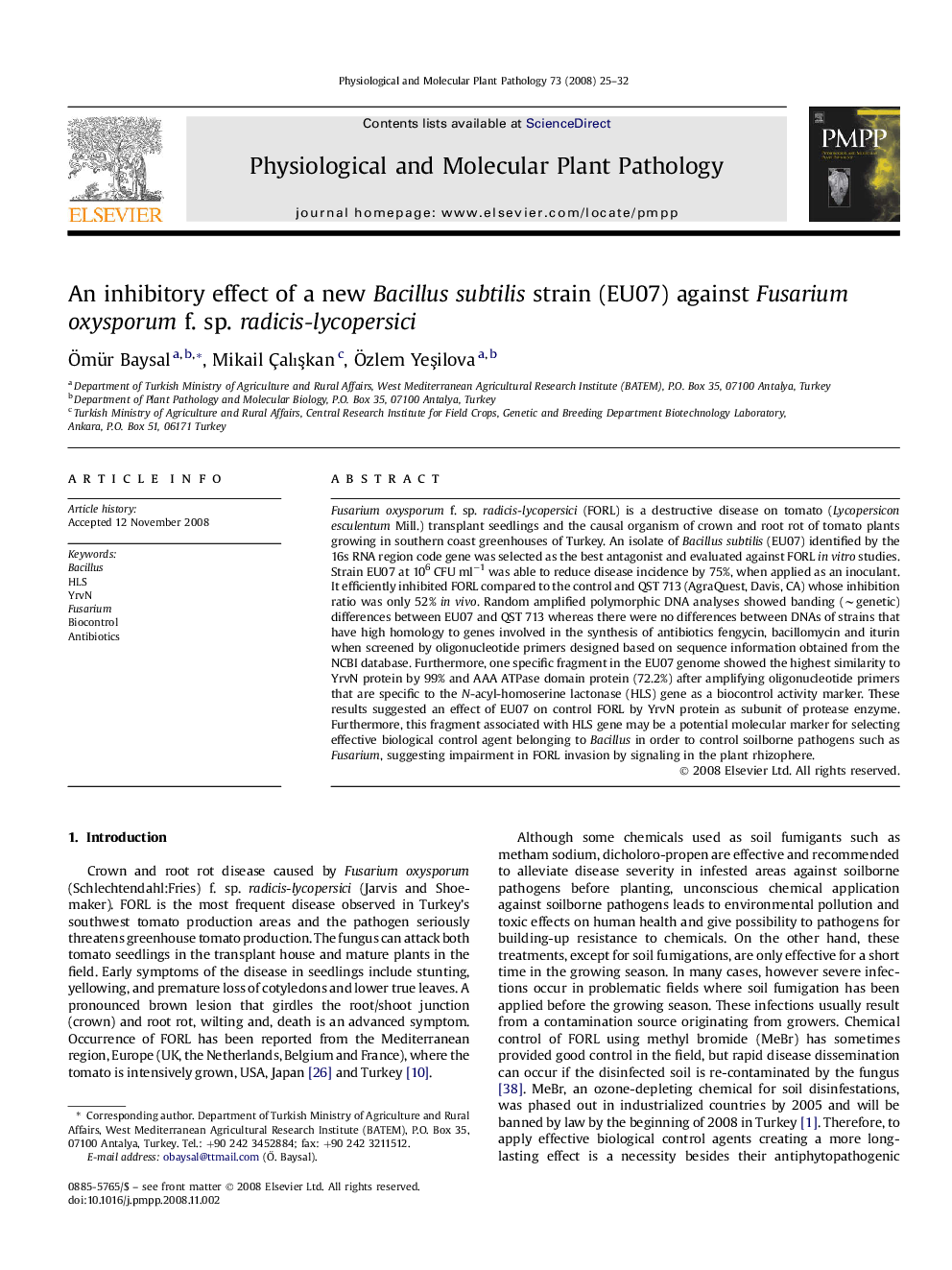| Article ID | Journal | Published Year | Pages | File Type |
|---|---|---|---|---|
| 2836606 | Physiological and Molecular Plant Pathology | 2008 | 8 Pages |
Fusarium oxysporum f. sp. radicis-lycopersici (FORL) is a destructive disease on tomato (Lycopersicon esculentum Mill.) transplant seedlings and the causal organism of crown and root rot of tomato plants growing in southern coast greenhouses of Turkey. An isolate of Bacillus subtilis (EU07) identified by the 16s RNA region code gene was selected as the best antagonist and evaluated against FORL in vitro studies. Strain EU07 at 106 CFU ml−1 was able to reduce disease incidence by 75%, when applied as an inoculant. It efficiently inhibited FORL compared to the control and QST 713 (AgraQuest, Davis, CA) whose inhibition ratio was only 52% in vivo. Random amplified polymorphic DNA analyses showed banding (∼genetic) differences between EU07 and QST 713 whereas there were no differences between DNAs of strains that have high homology to genes involved in the synthesis of antibiotics fengycin, bacillomycin and iturin when screened by oligonucleotide primers designed based on sequence information obtained from the NCBI database. Furthermore, one specific fragment in the EU07 genome showed the highest similarity to YrvN protein by 99% and AAA ATPase domain protein (72.2%) after amplifying oligonucleotide primers that are specific to the N-acyl-homoserine lactonase (HLS) gene as a biocontrol activity marker. These results suggested an effect of EU07 on control FORL by YrvN protein as subunit of protease enzyme. Furthermore, this fragment associated with HLS gene may be a potential molecular marker for selecting effective biological control agent belonging to Bacillus in order to control soilborne pathogens such as Fusarium, suggesting impairment in FORL invasion by signaling in the plant rhizophere.
